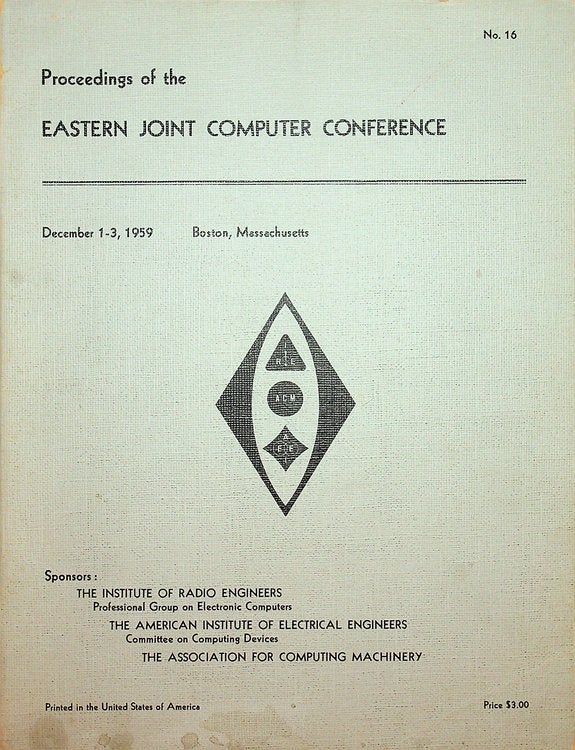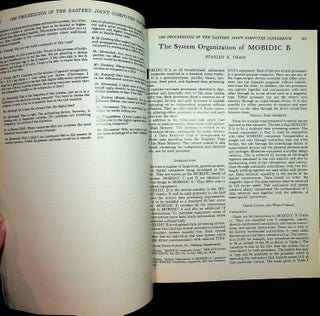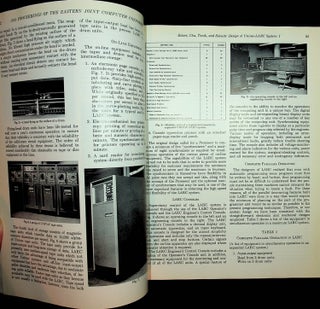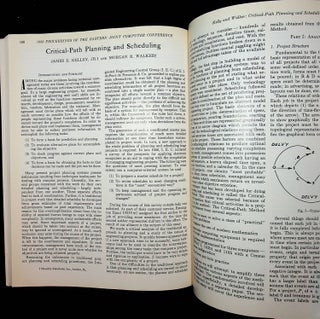Proceedings of the Eastern Joint Computer Conference : Papers presented at the Joint IRE-AIEE-ACM Computer Conference Boston, Massachusetts, December 1-3, 1959
Various: The 1959 Eastern Joint Computer Conference for The National Joint Computer Committee 1959. First Edition. 260 pages. Tan printed wrappers. Several stains to wrappers, upper corner bumped. Clean internally. Staples rusted, front cover glue cracked but not yet loose. Very Good. Wraps. [27881]
Sponsored by the Institute of Radio Engineers (IRE), American Institute of Electrical Engineers (AIEE), and The Association for Computing Machinery (ACM), this is the 16th conference held on the subject of computing. Contains articles by many pioneers including Eckert, and machines including UNIVAC-Larc, The STRETCH computer, MIBIDIC B, and many other ideas including magnetic drum memory for subminiature digital computers.
One of the more interesting non-computer papers is "Critical-Path Planning and Scheduling" by J. E. Kelley, Jr., and M. R. Walker. "The critical path method (CPM) is a project modeling technique developed in the late 1950s by Morgan R. Walker of DuPont and James E. Kelley Jr. of Remington Rand.[in their paper found in this conference proceeding on pages 160-173]. Kelley and Walker related their memories of the development of CPM in 1989. Kelley attributed the term "critical path" to the developers of the PERT which was developed at about the same time by Booz Allen Hamilton and the U.S. Navy. The precursors of what came to be known as Critical Path were developed and put into practice by DuPont between 1940 and 1943 and contributed to the success of the Manhattan Project.
Critical Path Analysis is commonly used with all forms of projects, including construction, aerospace and defense, software development, research projects, product development, engineering, and plant maintenance, among others. Any project with interdependent activities can apply this method of mathematical analysis. The first time CPM was used for major skyscraper development was in 1966 while constructing the former World Trade Center Twin Towers in New York City. Although the original CPM program and approach is no longer used, the term is generally applied to any approach used to analyze a project network logic diagram."
In a nutshell, the Critical Path Method can be used in large scale projects of all types to ascertain (in combination with tools like PERT charts) what deliverables depend on what other parts of the project, and hence allow management to the critical path components without which the project won't get done on time. It also allows changes to be incorporated, and can be used as a predictive tool to ascertain what changes in a project will do to the ultimate deliverables. These tools were used very effectively in large scale projects for years, and became essential even while "improvements" and "new systems" were created. A milestone in project management approaches.
See Origins of Cyberspace 740 which discusses the origin of these Joint Computer Conferences and their importance.
Price: $375.00





